Perhaps one of manic-depression's best-known champions, the writer and actress shows us how she wrangles her many moods.
 CARRIE FISHER'S DRUG USE WAS A WAY TO "DIAL DOWN" THE MANIC IN HER. "I WANTED TO PUT THE MONSTER IN THE BOX. DRUGS MADE ME FEEL MORE NORMAL."
CARRIE FISHER'S DRUG USE WAS A WAY TO "DIAL DOWN" THE MANIC IN HER. "I WANTED TO PUT THE MONSTER IN THE BOX. DRUGS MADE ME FEEL MORE NORMAL."
"HOW MANIC AM I?" ASKS Carrie Fisher as she climbs around her hillside with a potted plant. Dressed in a sleek black suit, she positions the shrub in an empty spot. "How's that?" Later, she points to a horticulture article highlighting a garden in a rainbow of color. "That's what I want." She confesses that lately, while she's writing, she looks at her garden and gets up to readjust the trees and flowers that are yet to be planted. The garden is her latest obsession.
Fisher is up-front about her manic behavior. At first glance, she doesn't seem any crazier than the rest of us. But when she pulls out her medications, you think again. All the little capsules and tablets--prescription drugs to tame her bipolar disorder--are organized in a weekly container. "Sunday, Monday, Wednesday," she mimics that famous scene from The Godfather.
She takes nearly two dozen pills a day. But recently, she blew off her daytime dosages and the result was a weeklong escapade that ended in a tattoo parlor on the west side of Los Angeles. Her manic side drives her to impulses, and as she notes, "Impulses become edicts from the Vatican." Fortunately, for her sake, two friends accompanied her. "They were concerned about me." And with good reason.
Nearly four years ago, the writer and actress suffered what she calls a "psychotic break." At the time, she was experiencing a deep depression--just getting out of bed to pick up eight-year-old daughter Billie was a major feat. She was also improperly medicated. She ended up in the hospital. There she was riveted to CNN, convinced that she was both the serial killer Andrew Cunanan as well as the police who were seeking him. "I was concerned that when he was caught, I would be caught," she recalls.
Her brother, filmmaker Todd Fisher, feared that he was going to lose her. "The doctors said she might not come back." Awake for six days and six nights, she recalls hallucinating that a beautiful golden light was coming out of her head. Yet the confusing thing about her mania, says Todd, is her ability to remain articulate, clever and funny. Todd says she launched into a Don Rickles-like diatribe, "ripping everyone who came into her room."
Ex-partner Bryan Lourd, who has remained a friend, was by her side. She said to him, "She's in the chair, she let me out. I have to talk to you. I can't take care of Billie on my own."
At the hospital, she couldn't bear seeing her mother, actress Debbie Reynolds, and asked that she not visit her. The two remain close--actually, Reynolds bought the house next door.
FISHER ROLLS AROUND ON HER BED and does somersaults. "I have to get out of here," she pleads. We hop into her station wagon and head for the San Fernando Valley. At a garden nursery, we walk up and down the footpaths looking for color. She picks up purple roses and orange star clusters. While she talks about her garden, "I want everything to be right," she is all too aware of her obsessive tendencies. Yet her mania may well be an important part of her brilliance.
The daughter of Reynolds and 1950s crooner Eddie Fisher, Carrie watched her father run off with actress Elizabeth Taylor. "An unpleasant experience," as she puts it. Although she had an absent father, she knows she resembles him in the most worrisome way. She notes that he is an undiagnosed manic-depressive, "He bought 200 suits in Hong Kong, was married six times and bankrupt four. It's crazy."
In her teens, what she wanted most was to be near her mother, so Carrie made her Broadway debut in Irene at age 15. Reynolds was the star of the show. Not long after, Fisher played the scene-stealing nymphet in the movie Shampoo, then she was immortalized as Princess Leia in that metal bikini. Her role in the classic Star Wars trilogy shot her into superstardom.
This kind of celebrity, though, comes with trappings. It was sex, drugs and late-night partying with Hollywood heavies like John Belushi and Dan Akroyd. One night, she was so high Akroyd made her eat. She choked on a Brussels sprout, so he performed the Heimlich maneuver. Then he proposed to her.
Her longtime friend, director and actor Griffin Dunne, says she made partying look fun. "Getting stoned was a part of all our lives when we were younger. Her abuse only became apparent later to me. I told her she was taking too many pills, but of course I was drunk at the time, so I wasn't making a lot of sense."
Marijuana, acid, cocaine, pharmaceuticals--she tried them all. Being on the manic side of bipolar disorder, her drug use was a way to "dial down" the manic in her. In some respects it was a form of self-medication. "Drugs made me feel more normal," she says. "They contained me."
But her addictions were serious. At her worst, she took 30 Percodan a day. "You don't even get high. It's like a job, you punch in," she recalls. "I was lying to doctors and looking through people's drawers for drugs." Such relentless abuse landed her in rehab, at age 28, after she overdosed and wound up with a tube down her throat to pump her stomach. In the end, her misadventures were recounted in her autobiographical novel, Postcards From the Edge.
Writing, her secret ambition, helped her stay focused. Postcards won her wide acclaim. Later still, she continued to gain adulation when she wrote the book's screenplay. The film version, in fact, starred friend Meryl Streep as the drug addicted heroine.
When she wrote Postcards, she says she was, "uber-involved" in her 12-step recovery and subsequent addiction support groups, but not all her issues were addressed. Her friend Richard Dreyfuss told her that she suffered from more than just drug addiction. "You don't walk down the street, it's a parade."
Dunne never thought of Fisher's problem as a mental illness. That is, until he misplaced a rug she had lent him. She was very understanding and told him not to worry. Yet, four years later, Fisher brought up the rug. "She was furious about it, as if it just happened. Then we talked a few days later and the rug was not that big a deal."
At first, Fisher may have ignored her friends, but she eventually found a psychiatrist, proper medication and a support group for manic-depressives. "When the group started talking about their medications, it was such a relief," she remembers. She has since become vocal in the struggle for mental health care. Earlier this year she lobbied for more funding to treat mental illness at the Indiana statehouse.
Fisher has two moods, Roy the manic extrovert and Pam the quiet introvert. "Roy decorated my house and Pam has to live in it," she quips. If a home is any indication of one's state of mind, then Fisher's mind is both playful and bizarre. A chandelier dangles from a tree along the driveway and signs such as "beware of trains" hang everywhere.
Her 1933 ranch style home, once owned by Bette Davis, is littered with details that reveal her comic nature. One painting in her bedroom depicts Queen Victoria tossing a dwarf. And inside a triptych in the dining room you find an effigy of Princess Leia.
Throughout the house, there are irreverent references to the Princess, but as Fisher puts it, "Leia follows me like a vague smell." Her metal bikinied space babe is perhaps one of the most downloaded images on the Web. You would think, though, that Fisher's accomplishments as a writer might have eclipsed any memories of Leia. Since she wrote Postcards, she has written two additional novels.
One, Surrender the Pink, was about her relationship with ex-husband and pop icon Paul Simon, to whom she was married for 11 months. For Fisher, his words had a certain soothing rhythm. "Except when the words are organized against you, of course." She says she really didn't fit the stereotype of wife, and as her friends put it, there were two flowers and no gardener.
Fisher is perhaps one of the more productive manic-depressives. She has script-doctored countless Hollywood films including Milk Money and Sister Act. She is even hosting a talk show for Oxygen Media. And in recent years, she has written screenplays; one for Showtime is about a manic depressive writer who ends up in a mental hospital.
From working with her, Streep found how very disciplined Fisher is. She is focused and stays on task. For Fisher, working in spurts that may coordinate with her manic highs can be a good thing. "She has wonderful, undeluded inspirations. She has told me that she is sometimes reluctant to ameliorate a productive state by dulling it with medication," says Streep.
Friend and actress Meg Ryan agrees that Fisher has some tendencies to mess with herself, but she gets herself back in line. "She manages this disease with enormous integrity. She's a great example of how to do it, and she's very serious about it. She's serious about being a good mom and a good friend."
Fisher takes her role as parent very seriously. In fact, she will not take on any projects that might compromise her time with Billie. Streep notes, "Some mothers tend to use a high-pitched voice with their children. Carrie doesn't." She speaks to her daughter like a friend.
That loyal family and friends surround her is a testament to her character. After her hospitalization, she threw a well-attended party. "I was worried about how everyone would react to me." But as always, her humor saved her. She rented an ambulance and a gurney that had a life-size cutout of Princess Leia hooked up to an IV. "She plucks out that thing that would destroy the rest of us. Then she makes fun of it," says Streep. "I'm sure it saves her."
In her own words
A chat with Carrie Fisher
Q: Many of us know you as Princess Leia, the invincible heroine of Star Wars. Are you invincible?
Carrie Fisher: No. I don't think that anybody's invincible, but I can certainly outlast things. I don't want to be thought of as a survivor because you have to continue getting involved in difficult situations to show off that particular gift, and I'm not interested in doing that anymore.
Are you saying you'd like to have some peace in your life?
I don't want peace, I just don't want war.
At what point in your life did depression or mania become evident?
I was diagnosed at 24, but I had been seeing a therapist since I was about 15. I didn't like the diagnosis. I couldn't believe the psychiatrist told me that. I just thought it was because he was lazy and didn't want to treat me. I was on drugs, too, at the time, and I don't think you can accurately diagnose bipolar disorder when someone is actively drug addicted or alcoholic. Then I overdosed at 28, at which point I began to accept the bipolar diagnosis. It was [Richard] Dreyfuss who came to the hospital and said, "You're a drug addict, but I have to tell you that I've observed this other thing in you: You're a manic-depressive." So maybe I was taking drugs to keep the monster in the box.
What happened after the hospitalization?
I spent a year in a 12-step program, really committed, because I could not believe what had happened--that I might have killed myself. During that year, I started having episodes that were very unpleasant and very intense. Someone would hurt my feelings, and I would get upset and stay upset for hours. I'd sit in my house sobbing, unable to stop, inconsolable. Sometimes I'd get very frustrated, I broke a lot of phones. This was embarrassing to me because I really didn't think of myself as temperamental and spoiled. There was a lot of shame associated with some of the behaviors that I had. I went to a doctor and told him I felt normal on acid, that I was a light bulb in a world of moths. That is what the manic state is like. He put me on lithium. I liked that for a while, but soon I missed my little pal, my up mood. I didn't fully accept the bipolar diagnosis. I thought, well, everybody's moody...maybe I'm just telling myself a story. Maybe there's no such thing. Maybe it's an exaggeration. I went to Australia to do a film. I went off the lithium, and if I was ever manic, it was then. It came back with a vengeance and it wanted to go traveling and we (me and the mood and my brother) ended up in China because it was near. I looked at a map and I thought, "It's only six inches away. That's great."
So now you're in China, totally manic, and you're off your medication.
Yes, and a lot of it was funny in the beginning. I would just go on these rambles. For example, we went to the Great Wall of China and they said, "The left side is where the Chinese people go up, and the tourist side is on the right because it's easier..." And I thought, "They're lying to me," because I knew that at Disneyland, the left side of the Matterhorn was faster than the right side. This is the kind of logic I have when I'm manic.
When did you finally accept the fact that you were suffering from bipolar disorder?
I didn't accept it fully until I had the psychotic break four years ago, in 1997. There was a lot of pressure in my life. I was still wrangling with my moods, and I was living in a house, which is a lot of responsibility. I had a child, and for her sake I was trying to act as if I hadn't been hurt by her father, who had left me for a man. I was hiding, and I am not used to doing that. I just started to feel weirder and weirder, and I think I was improperly medicated. I was intermittently on drugs at this time too. I got unbelievably depressed. My daughter was going to camp, and I would get up every day out of this bed, this swamp, and go pick her up. That was the most complicated thing in the world. I don't know how I did it. It must have been very unpleasant for her. I went to a doctor who gave me all these new medications that sounded like they came from Venus--they had no vowels in them--and something very bad happened. The medications collided, and I became very, very ill. I collapsed, I stopped breathing, and I was taken to the hospital where they sent me home and put me on a "medication vacation." I didn't sleep for six days, and I was scared. My mind split open, and some bad thing oozed out, and that's what I was left with. I thought that if I fell asleep I would die. I wasn't connecting at all, but I kept talking and talking and talking. At a certain point, I lost my mind. The birthing was over, and I got to the other side of the looking glass. When I went back to the hospital, I was hallucinating.
How long was the treatment?
I'm not sure how long I was in the hospital, but I was an outpatient for five months. Afterward, my friend Penny Marshall and I had our big annual party. All the tables had IV hookups on them with colored water, and the cake was me in bed with Penny visiting. It was performance art. It was beautiful.
How are you now?
I'm fine, but I'm bipolar. I'm on seven medications, and I take medication three times a day. !his constantly puts me in touch with the illness I have. I'm never quite allowed to be free of that for a day. It's like being a diabetic.
Do you feel at this point that the problem is under control?
No. I feel that the medication that I'm on can handle it, but I still have the impulse to ride the "white lightning" again.
Do you have a message for people who suffer with bipolar disorder?
Oh, yes. You can outlast anything. It's complicated, it's a job, but it's doable. One of the greatest things that happened for me was that psychotic episode. Having survived it, I now know the difference between a problem and an inconvenience. Bipolar disorder can be a great teacher. It's a challenge, but it can set you up to be able to do almost anything else in your life.
You do seem like Princess Leia, after all--conquering foes even darker than Darth Vader. Is there turmoil in your future?
Most likely. I would like to keep that to a minimum. But now I know how to put these things in perspective.
Treating Bipolar Disorder: Present and Future
Bipolar disorder is a long-term illness requiring long-term treatment. Mood-stabilizer medications remain the mainstay of treatment. Lithium's effectiveness has been well-established for more than 30 years, end carbamazepine end valproate have also become widely accepted first-line treatments in the past decade. In general, these medications are effective in controlling symptoms of both depression and mania or agitation.
Antidepressant medications used to treat unipolar depression are a common supplement to mood stabilizers, but may actually trigger high or manic episodes--especially if used alone. These treatments are at least moderately effective for 50 to 75 percent of bipolar disorder sufferers.
Unfortunately, these standard treatments are often ineffective or only partially effective. To address this gap, recent research has identified several promising alternatives. Newer or atypical antipsychotic medications such as olanzapine, risperidone and quetiapine appear to help control manic episodes. Several new anticonvulsant or antiepilepsy drugs such as lamotrigine, topiramate end gabapentin may also help stabilize mood when traditional medications prove ineffective. Five years from now, there should be a wider range of effective mood-stabilizer medications to choose from.
Several forms of psychotherapy or counseling have also been developed specifically for treatment of bipolar disorder. Cognitive and behavioral treatments focus on recognizing early warning signs, interrupting unrealistic thoughts and maintaining positive activities. Social rhythm therapies focus on maintaining healthy patterns of sleep, activity and social involvement, while family therapies look at the ways family interactions can either support or undermine stability and health. Recent research suggests that these treatments may be valuable treatment components, adding significant benefit to medication management.
To successfully treat bipolar disorder, persistence is key. Different treatments help different people, and individual response to a particular treatment is difficult to predict. Side effects of medication also vary widely and unpredictably, but if treatment is unsatisfactory, good options likely remain. The one common element in any successful treatment is a long-term partnership with healthcare providers.
--Gregory Simon, M.D., M.P.H.
Carrie's Biography
1956: Born to Debbie Reynolds and Eddie Fisher
1972: Broadway debut in Irene, starring her mom
1975: Attended Central School of Speech and Drama, London. Appeared in first film, Shampoo
1977: Through 1983: Appeared in the classic Star Wars film trilogy as Princess Leia
1983: Married pop icon Paul Simon, divorced after 11 months
1987: Wrote autobiographical novel, Postcards From the Edge
1990: Wrote novel Surrender the Pink, about her marriage to Simon and wrote screenplay for Postcards
1992: Gave birth to daughter, Billie Catherine
1994: Wrote novel, Delusions of Grandma
2000: Cowrote These Old Broods, starring Debbie Reynolds
Since 1980s: Appeared in films--including When Harry Met Sally as witty best friend
Since 1990s: Script-doctored films including Hook, Sister Ret, Lethal Weapon 3, Outbreak, The Wedding Singer
next: David: Riding the Wave
~ bipolar disorder library
~ all bipolar disorder articles
 Over-stressed teens can develop anxiety disorders and depression. Here's how parents can help and techniques for teens to decrease stress.
Over-stressed teens can develop anxiety disorders and depression. Here's how parents can help and techniques for teens to decrease stress. CARRIE FISHER'S DRUG USE WAS A WAY TO "DIAL DOWN" THE MANIC IN HER. "I WANTED TO PUT THE MONSTER IN THE BOX. DRUGS MADE ME FEEL MORE NORMAL."
CARRIE FISHER'S DRUG USE WAS A WAY TO "DIAL DOWN" THE MANIC IN HER. "I WANTED TO PUT THE MONSTER IN THE BOX. DRUGS MADE ME FEEL MORE NORMAL." It has a brutal history. We don't know how, or even if, it works. So why do we still give electric shocks for depression? Kathy Brewis investigates.
It has a brutal history. We don't know how, or even if, it works. So why do we still give electric shocks for depression? Kathy Brewis investigates.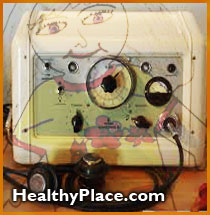 The writer: Hakeaga (Hake) Halo, then aged 13, writing to his grandmother in Auckland from Lake Alice Psychiatric Hospital near Wanganui in 1975. The medium: a speech bubble written in Niuean next to a smiling face at the end of a letter. In the letter itself the boy assured his family, in English, that the nurses and psychiatrists at Lake Alice were treating him well.
The writer: Hakeaga (Hake) Halo, then aged 13, writing to his grandmother in Auckland from Lake Alice Psychiatric Hospital near Wanganui in 1975. The medium: a speech bubble written in Niuean next to a smiling face at the end of a letter. In the letter itself the boy assured his family, in English, that the nurses and psychiatrists at Lake Alice were treating him well.
 Dr. Cox is President and Medical Director of the National Anxiety Foundation. The word "National" in National Anxiety Foundation refers to the nation of the United States of America. The following medical information is written specifically for the enlightenment of the citizens of the United States of America. However, in the international scope, terrorism affects almost everyone on earth. Citizens of every country may be helped by this information.
Dr. Cox is President and Medical Director of the National Anxiety Foundation. The word "National" in National Anxiety Foundation refers to the nation of the United States of America. The following medical information is written specifically for the enlightenment of the citizens of the United States of America. However, in the international scope, terrorism affects almost everyone on earth. Citizens of every country may be helped by this information.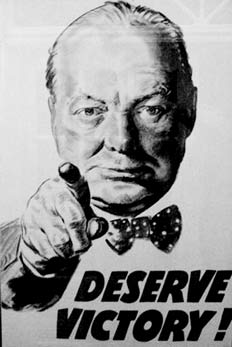
 Older girls with attention deficit hyperactivity disorder are more likely than younger girls to also suffer from depression and anxiety, according to a new study. These girls also often have higher IQ scores than boys with the same diagnosis, the researchers found in the study published in the October issue of the Journal of Developmental and Behavioral Pediatrics.
Older girls with attention deficit hyperactivity disorder are more likely than younger girls to also suffer from depression and anxiety, according to a new study. These girls also often have higher IQ scores than boys with the same diagnosis, the researchers found in the study published in the October issue of the Journal of Developmental and Behavioral Pediatrics.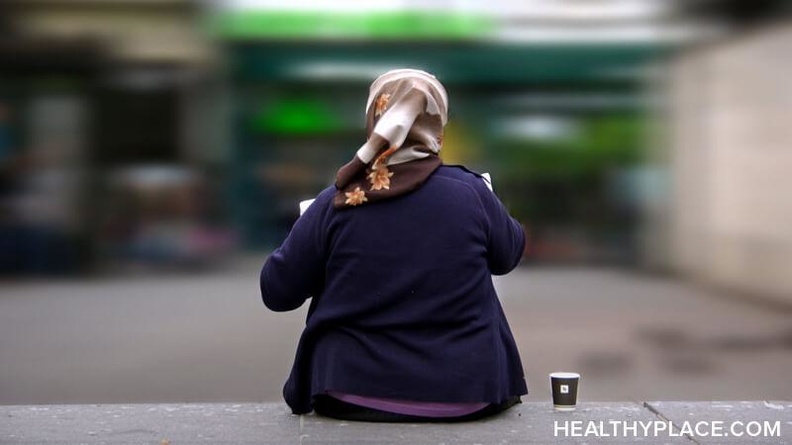
 Overall, minorities share the same prevalence of mental disorders as whites, the study reports. That rate excludes high-risk groups such as those who are homeless, incarcerated or institutionalized.
Overall, minorities share the same prevalence of mental disorders as whites, the study reports. That rate excludes high-risk groups such as those who are homeless, incarcerated or institutionalized. She is scared to go to sleep, to swim, even to eat her favorite foods symptoms that can easily be dismissed as simply difficult childhood behavior.
She is scared to go to sleep, to swim, even to eat her favorite foods symptoms that can easily be dismissed as simply difficult childhood behavior.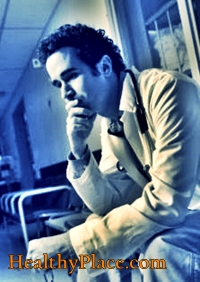 What accounts for the huge increase in the number of children diagnosed with attention deficit hyperactivity disorder (ADHD) and the use of Ritalin? Dr. Lawrence Diller analyzes the explosive growth of the ADHD diagnosis and Ritalin use.
What accounts for the huge increase in the number of children diagnosed with attention deficit hyperactivity disorder (ADHD) and the use of Ritalin? Dr. Lawrence Diller analyzes the explosive growth of the ADHD diagnosis and Ritalin use.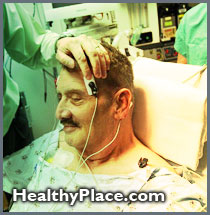 George Ebert is not certain how many of his memories are missing. He can recall that during a 1971 tour of Ohio with his family, his mental state first began to deteriorate. He recalls hurriedly trying to "cleanse" his life by throwing away most of his belongings, and attempting to hitchhike in the middle of the night from Columbus to Texas with his son in tow on a search for God.
George Ebert is not certain how many of his memories are missing. He can recall that during a 1971 tour of Ohio with his family, his mental state first began to deteriorate. He recalls hurriedly trying to "cleanse" his life by throwing away most of his belongings, and attempting to hitchhike in the middle of the night from Columbus to Texas with his son in tow on a search for God.